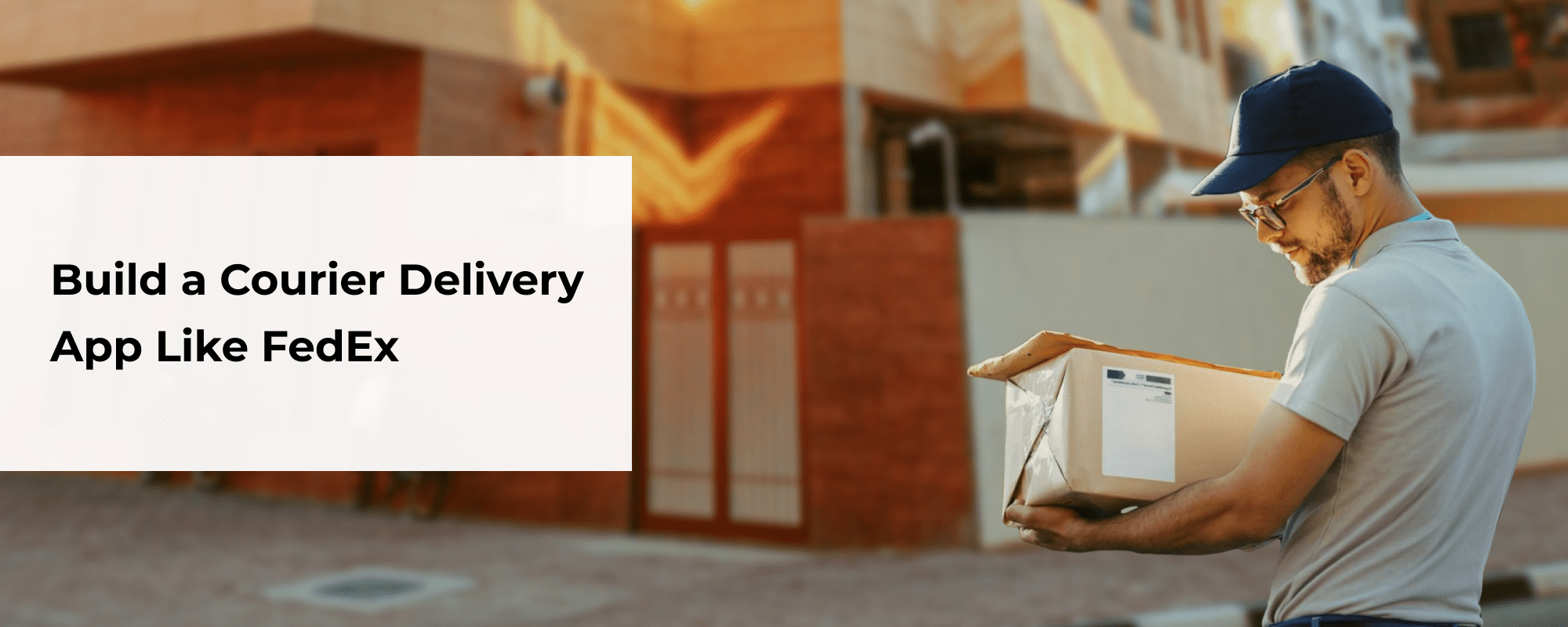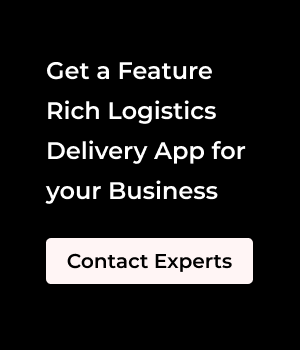The major shift in digital adoption has simplified the process of on-time deliveries for megacorporations in the logistics domain. Earlier the lack of technology made it a hectic process for customers to ship their packages from one location to another. However, technological advancements like GPS tracking, QR codes and business automation have reduced the complexity of shipping processes to a great extent.
In terms of growth, Alliet Marketing Research’s report shows that the global logistics industry is expected to reach $80.6 billion in 2031 from $12 billion in 2021, with an exceptional CAGR of 20.8% during the forecast period 2022-2031.
One of the leading players in the industry is FedEx, a global on-demand delivery giant that has been continuously reforming the process of delivering consignments with minimal limitations to location and time. The corporation currently serves 220 countries with 2200 office locations and multiple subsidiaries.
While FedEx along with other key players continue to dominate the industry, various market studies are positive about certain gaps expected to be bridged by new players in the market. This article studies the operations of on-demand deliveries by FedEx and further guides entrepreneurs on starting a logistics business like FedEx.
Table of Contents:
What Is FedEx? Engagement, Operations, And Business Model
FedEx along with its subsidiaries is the world’s largest express shipping company delivering millions of couriers every day. It helps people and businesses ship their parcels across the globe with complete transparency through its visibility tools and purchase order management system. The revenue of the corporation for the fiscal year 2022 is $94.75 billion with a 9.36% increase from last year’s $83.95 billion. The revenue of FedEx is shared internally by three major segments, including express deliveries, ground deliveries, and freight services.
Below is the table listing major subsidiaries that work under the umbrella of FedEx corporation with their offerings:
| Name of the Subsidiary |
Specialization |
| FedEx Express |
For overnight deliveries, 2-day, and 3-day shipping services |
| FedEx Services |
Sales, marketing, tech-support, collection, and billing services for in-house transportation segments |
| FedEx Ground |
B2B deliveries, convenient home deliveries, and ground shipping (fast and low-cost residential shipping for small homegrown businesses) |
| FedEx Freight |
Less-than-truckload (LTL) shipping for businesses in entire United States, Canada, Mexico, Puerto Rico, and U.S. Virgin Islands |
| FedEx Office |
Corporate print solutions, packaging, professional finishing and shipping services from other concerns. |
| FedEx Logistics |
Integrated logistics solutions via air and ocean freight, supply chain solutions, customs brokerage, and management tools |
| FedEx Dataworks |
Employ gathered data insights to optimize operations, ease the supply chain, and serve customers more efficiently. |
FedEx operates with an approach of reliable and fast deliveries with its huge fleet of transports including 697 aircrafts, making it the world’s largest freight airline. The corporation claims a 99% reliability rate for on-time deliveries if the parcel gets picked up on time.
The overnight delivery services of FedEx can be classified as well-planned on-demand logistics services that ensure parcel deliveries before the predicted time. In overnight delivery services, FedEx delivers the consignment on the next business day after picking up the parcel from the customer’s location. The service is available in the United States and Canada, where general customers or businesses can ship parcels weighing up to 150 lbs. 119″ in length. As mentioned above, the overnight delivery services of FedEx come under FedEx express, which generated huge revenue of $42.1 billion in 2021 alone.
Features To Have In Your On-Demand Courier Delivery Application
ith global digitization and easy internet access, eCommerce businesses are flourishing with continuous growth. Several online businesses usually search for a reliable logistics partner. So starting an on-demand logistics service is a completely viable and realistic business idea to materialize in present and coming years.
Shortlisting features for your on-demand courier delivery business requires an intuitive checklist that you can create on your own after researching the market. Below is the list of features that can help you stay ahead of the competition.
| Essential Features For Online Courier Delivery Businesses |
| 1. Login & Registration |
2. Admin Chat |
| 3. Premium And Fast Delivery Option. |
4. Packaging Options |
| 5. Real-Time Tracking |
6. Push Notifications |
| 7. Payment Gateway |
8. Rating And Review |
| 9. Rewards And Offers |
10. Help And Support |
| 11. Map Integration for delivery executives |
12. Estimated delivery time
|
| 13. Price comparison with other service providers |
Launch Your On-demand delivery business from scratch
Step-by-Step Approach To Launch An On-Demand Courier Delivery App
Define Your Business Goals
Analyzing successful businesses on the internet is fairly easier than understanding the whole work process that makes them successful. While giants like FedEx have been operating for decades, it is their branding and value-driven services that have created trust among customers. Depending upon the target location and audiences of your business, you can set objectives to achieve within a time frame. This helps in analyzing the progress of the organization and employees as well. To survive the competition from existing players in the market like FedEx, DHL, UPS, etc., you can formulate a marketing strategy that helps in creating trust among the customers.
You can start promoting your logistics business when it’s in the development phase itself. This helps to create brand awareness among users and small businesses. As per a report published by BusinessWire, the global market for E-commerce Logistics domain was estimated at US $233.7 Billion in the year 2020 and is expected to reach US $861.4 Billion by 2027, growing at a CAGR of 20.5% over the period 2020-2027. So when you operate an online delivery business, it becomes extremely important to invest a few efforts in B2B logistics, taking into account the high retention rate.
Create A Checklist For Your Mobile App Requirements
A mobile app requirement checklist comprises the functions, processes, and purpose of an application. These functions in the checklist can be decided after analyzing the services and solutions offered by the business. You can start with your expectations from the application and list the features and requirements for different use cases to streamline overall business operations. Here are some details you can include in your app requirements document:
| Specifications For Mobile App Requirements |
| 1. Problem your business will solve |
| 2. Different use cases |
| 3. Interface requirements |
| 4. User characteristics and objectives |
| 5. Security, reliability, and portability |
| 6. Necessary integrations |
| 7. Features requirements and other details that make your business unique. |
Hire a Mobile App Development Company
As soon as you collect all your business requirements, you can hire a development partner to build dedicated applications for your logistics delivery business. While there are multiple firms that develop platforms for startups, you can go with a mobile app development company with transparent processes to keep you updated on tasks performed on the project at every stage. Additionally, you can count on post-development tech support, refund policies, and communication proficiency.
For a logistics delivery business like FedEx, you will require a mobile app development company that understands your business requirements and has the caliber to develop your project as discussed and within time. You can evaluate a development company by checking its portfolio, and reviews on genuine platforms like Clutch, Trustpilot, GoodFirms, Designrush, etc.
Furthermore developing a full-fledged platform is not a valid approach for startups as it is a costly affair, time-consuming, and even impacts the return on investments made in the initial stages. You can ask your technology partner to develop a minimum viable product (MVP) for your business to mark an entry into the market. After your business gets attention from the users, you can slowly transition to a full-fledged product.
Create A Minimum Viable Product (MVP) For Your Mobile App
When just starting with your online business, you should enter with a minimum viable product (MVP) to test the waters.
After you are done with the MVP development phase, you can launch the app on the internet and start the operations gradually. You can start registering delivery/pickup executives on the app to make them familiar with the functions and services of the platform.
To begin with the marketing phase, you can start marketing it locally and digitally as well. As per their website, FedEx has traffic of around 100M visitors per month on their website. You can strategize the marketing operations depending on potential customers, market gaps, competition, goals, and budget.
Launch an MVP to benchmark your courier delivery business idea
How Much Does Courier Delivery App Development Cost?
The final costs of your courier app development are subjective to the features you require in your end product. Below mentioned are the main variables that decide the final cost of your courier app development project:-
Project Complexity
The complexity of your courier app is an undefined factor that can impact your development costs up to a great extent. Since the courier delivery business has to be unique and comes with several uncertainties, the costs might go high if your development partner spends too many hours on the initial documentation and prototyping. Additionally, if you require some extra features other than the terms mentioned in the contract, you will have to pay for additional hours spent on the project.
Operating Systems
As per Statista, there are around 130 million Android and around 113 million iOS users in the United States alone. The user base of each of these operating systems is huge to be ignored. The app development with respect to the operating systems involves different processes, including architecture and tech stack. The development costs for iOS are slightly higher compared to Android. Or you can go with hybrid app development that comes at higher prices but works for both operating systems. So, the rise in development costs is quite evident and you will have to do some extra investments to fulfill the requirements.
Build A Hybrid App For Your On-Demand Delivery Business
Expertise Level and Location Of The Development Partner
The cost of app development is generally determined by the estimated hours to be spent on the project. Once the development company shares the estimated hours for the project, you can finalize the costs depending on the hourly development rates of the company. The hourly rate of mobile app development varies on the team’s expertise level, the company’s location, and multiple unknowns in the requirements. Companies in the USA can charge somewhere between $150-$200 per hour, which is a costly affair for any startup. Searching for a reliable mobile app development company from anywhere in south Asia can reduce your development costs to a great extent as the development costs are quite lower ranging from $70-$100 per hour for an expert team.
Wrapping Up
Picking up parcels, transporting them to shipping centers, real-time tracking, payment gateways, and excellent customer service are some major elements that constitute a successful on-demand courier delivery business. Express deliveries is a major stream of revenue for FedEx and other businesses operating in similar domains. While it may seem difficult to enter the market at the initial stages, trusted data sources and market experts believe that the logistics industry still has huge gaps to be bridged. Market research and end app development are two major areas where you need to pay attention to be a successful business owner. Furthermore, working on retention rates and customer reviews are critical components for the long-term success of the business. Since global eCommerce is on the rise, you can provide logistics services to established and budding marketplaces at more accessible rates and flexibilities to ensure stability and additional revenue sources.

